Monroe College School of Hospitality Management and the Culinary Arts Names America’s Best High School Chef and Pastry Chef
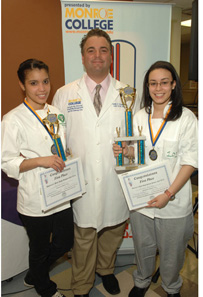 On March 3, 31 high-school students from throughout the New York metro area competed for the distinguished titles of America’s Best High School Chef and Pastry Chef in the fourth-annual competition sponsored by the Monroe College School of Hospitality Management and the Culinary Arts in the Bronx.
On March 3, 31 high-school students from throughout the New York metro area competed for the distinguished titles of America’s Best High School Chef and Pastry Chef in the fourth-annual competition sponsored by the Monroe College School of Hospitality Management and the Culinary Arts in the Bronx.
The prizes were academic scholarships to attend Monroe College. First-place prize was a full academic scholarship to the Monroe College School of Hospitality Management; second- and third-place prizes were partial academic scholarships worth $3,500 and $2,500, respectively, and prizes for all competitors were partial academic scholarships worth $1,500. Monroe awarded more than $200,000 in scholarships to the contestants.
Yocary Luna of Food and Finance High School in Manhattan was crowned America’s Best High School Chef for her Stuffed Chicken—Teriyaki Style with sauté of fingerling potatoes and string beans.

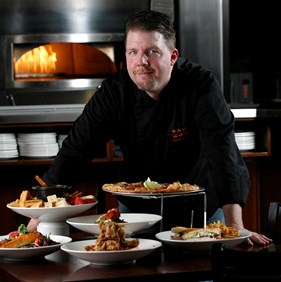 The executive chef of two-unit Saul Good Restaurant & Pub in Lexington, Ky., admits to learning a lot of hard lessons about how chefs and owners should get along, but he’s gotten a crash course in doing it the right way from founder Rob Perez. Chef Mayer shares some insights into why he believes “ours is not the typical owner-operator and chef relationship.”
The executive chef of two-unit Saul Good Restaurant & Pub in Lexington, Ky., admits to learning a lot of hard lessons about how chefs and owners should get along, but he’s gotten a crash course in doing it the right way from founder Rob Perez. Chef Mayer shares some insights into why he believes “ours is not the typical owner-operator and chef relationship.”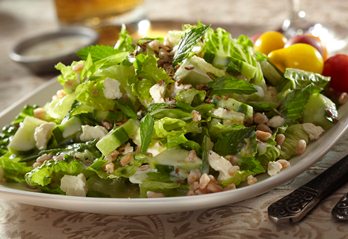 Mediterranean salads top the list when casual diners seek change.
Mediterranean salads top the list when casual diners seek change. “Artisan” on the menu used to entice diners. Not so much today. And “local” trumps “organic.” Meanwhile, overall restaurant spending is expected to grow.
“Artisan” on the menu used to entice diners. Not so much today. And “local” trumps “organic.” Meanwhile, overall restaurant spending is expected to grow.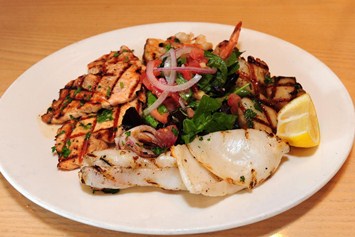 If any restaurant understands olive oil, it’s one named Extra Virgin. Here, the executive chef of the Arlington, Va., eatery extols the virtues of olive oil beyond the flavor it imparts to dishes.
If any restaurant understands olive oil, it’s one named Extra Virgin. Here, the executive chef of the Arlington, Va., eatery extols the virtues of olive oil beyond the flavor it imparts to dishes.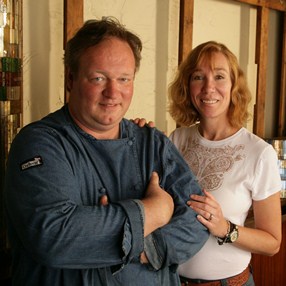 When someone has been imprisoned for 20 years, oftentimes corporations won’t hire him or her. Galen Scott Sampson, through his Baltimore restaurant’s apprenticeship program, is changing that mindset by building passionate, experienced culinarians who are difficult to refuse.
When someone has been imprisoned for 20 years, oftentimes corporations won’t hire him or her. Galen Scott Sampson, through his Baltimore restaurant’s apprenticeship program, is changing that mindset by building passionate, experienced culinarians who are difficult to refuse. A short, focused speech poses an opportunity for students to make an impression and explain themselves. It is also a way to build interest in what they are doing or want to do, as well as enlist support and sway opinion.
A short, focused speech poses an opportunity for students to make an impression and explain themselves. It is also a way to build interest in what they are doing or want to do, as well as enlist support and sway opinion. In a continuation of last month’s focus on teaching nutrition within a short class period, Chef Weiner explains how to emphasize the remaining six of 10 unchanging basic facts.
In a continuation of last month’s focus on teaching nutrition within a short class period, Chef Weiner explains how to emphasize the remaining six of 10 unchanging basic facts. A combination high school, urban farm and environmental education center in Connecticut is leading the way as a model in healthy lifestyles for students from all socioeconomic backgrounds.
A combination high school, urban farm and environmental education center in Connecticut is leading the way as a model in healthy lifestyles for students from all socioeconomic backgrounds.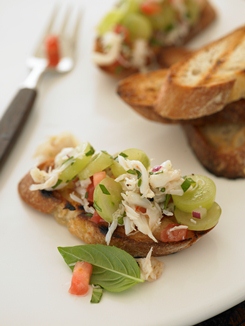 An e-learning module focusing on the versatility, nutrition and palate-pleasing power of California table grapes.
An e-learning module focusing on the versatility, nutrition and palate-pleasing power of California table grapes.